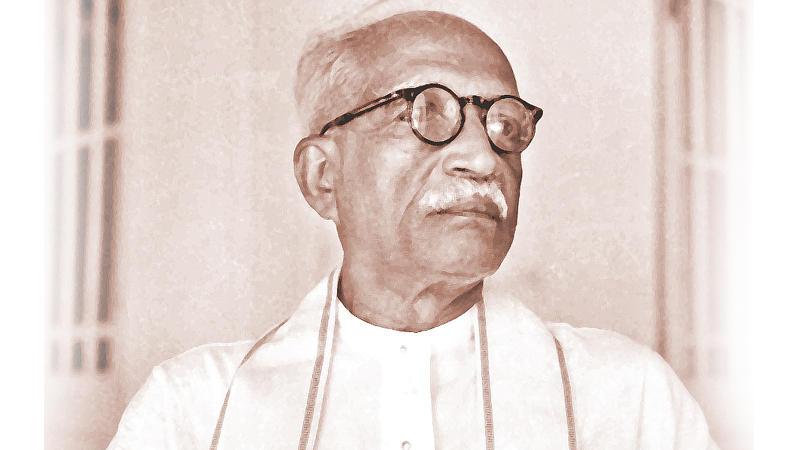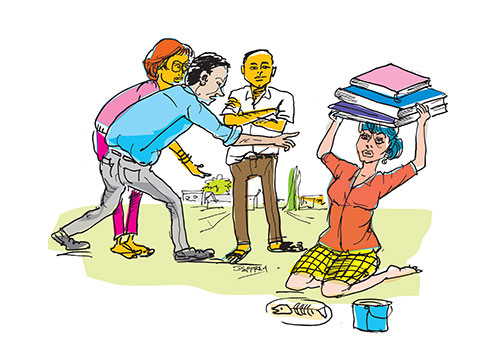by Sudesh Mantillake
This article is a continuation of views and opinions expressed in this forum on the quality assurance process in Sri Lankan university education. In this article, reflecting on my academic training and personal experiences, I mainly question the interpretation of “outcome-based education” (OBE) and the emphasis given to it in the Manuals prepared for Institutional Review and Undergraduate Study Programme Review of Sri Lankan Universities and Higher Education Institutions published by the University Grants Commission (UGC) in 2015 as part of a World Bank-funded project, currently under implementation. Based on my personal experiences as a university lecturer, who teaches dance and performance, I assert that UGC should revisit its approach to measuring quality and outcomes, particularly in the humanities and social sciences.
Outcome Versus Process-Based Education
The Manual for Review of Undergraduate Study Programmes defines OBE as “an educational theory that bases teaching learning and assessment components of an educational system around intended outcomes to ensure achievement of the [Intended Learning Outcomes – ILOs] by every student at the end of the educational experience.” As an educational theory, we can debate, agree/disagree on OBE. Indeed, OBE may be applicable to some educational experiences. For instance, after teaching dance anatomy, at the end of the course, we can agree that students should be able to know the importance of the spine for a dancer. However, OBE would not help to measure or assess students’ creativity and emotional maturity. As Farzana Haniffa previously mentioned in this column, educational outcomes could instead be described as “a process of preparation essential for the thriving of students, for the encouragement of their creativity and for the nurturing of their skills.” However, in the current quality assurance process, OBE is narrowly defined, and we are forced to comply with it across the board, with little consideration of its applicability to the setting or discipline, reflected in the manuals for institutional review, degree programmes, and other documents developed by universities and faculties to fulfill “quality assurance” needs.
In the Manual of Institutional Review of Sri Lankan Universities and Higher Education Institutions, under Quality Assessment, in section 3.3 on Criteria and Corresponding Best Practices, Criterion 1 (Governance and Management) specifies that “the success of the University/HEI is dependent on the efficiency and effectiveness of the monitoring, evaluation and reporting mechanisms. This is output and outcome based rather than input or process based.” And in Section 4.2 on Standards, Examples of Evidence and Score Guide, under Criterion 1 (Governance and Management), the Manual states that universities should make sure that there is “a strong commitment by the University/HEI leadership to reflect upon performance, output/outcomes rather than processes and inputs.” In these two instances, this manual not only emphasises an “outcome-based” approach but also discredits and rejects “process based” approaches to education. Here, “outcome” is defined narrowly as if it is an instant product that comes out of a factory. When universities develop their own guidelines based on this manual, they define “outcome” using criteria such as employability, starting salary, annual salary, etc. Sometimes, the outcome is also coupled with so-called performance targets. Hitting the target might be good in battles and wars, but as I believe, humanities education should oppose hitting educational targets and encourage a more holistic and collaborative learning process.
Outcome-Based Education and the Heart of the Matter
I teach Fine Arts. In Fine Arts, too, we are concerned about “quality” and ensuring that we create a quality outcome. For example, this quality outcome could be an emotional experience from an immersive theatre play. These types of outcomes cannot be quantified. For some, the effect of the outcome could be immediate, whereas for others, the emotional experience may have an effect years later. However, in Sri Lankan universities, in the name of quality assurance, we are pushed by UGC to adhere to a very different “quality” and “outcome,” which goes fundamentally against the way we perceive quality and outcome in humanities and social science education.
Quality and outcome in our fields cannot always be observable and measurable as expected in OBE. This was clearly identified and described in a report published by the American Academy of Arts and Sciences in 2013, which identifies humanities and social sciences as the heart of the matter, the keeper of the republic. According to the report:
“The humanities and social sciences are not merely elective, nor are they elite or elitist. They go beyond the immediate and instrumental to help us understand the past and the future. They are necessary and they require our support in challenging times as well as in times of prosperity. They are critical to our pursuit of life, liberty, and happiness, as described by our nation’s founders. They are The Heart of the Matter.”
The value of the humanities and social sciences cannot be evaluated by immediate results. The effect of a course in our discplines might not be observable at the end of the semester. They fulfill a critical role in civilization, for its quest for life, liberty, and happiness. These qualitative aspects fostered through humanities and social sciences education cannot be observable and measurable at the end of the semester. There is also an irony (maybe it is not an irony) that while UGC and Quality Assurance Council embrace the processes of quality assurance and accreditation emanating from the global north, they do not consider as seriously the critiques of OBE that also come from the global north. If one takes the “heart of the matter” seriously, quality and outcome as operationalised in the humanities and social sciences cannot be ignored.
Outcome-Based Quality Assurance as a Spectacle
I see the quality assurance process in Sri Lankan universities as a spectacle where we perform different roles. According to the script, the outcome is expected as a spectacle, but the creative process is neglected. Deviating from traditional theatre studies, performance studies as a discipline focuses on various aspects of performance in everyday life, including everyday performances within academia. Performance studies scholar Shannon Jackson, in her book Professing Performance (2004), shows how individuals who have become members of the “professional-managerial class” (PMC) perform within corporatised university education in the United States. She reminds us that some university academics also belong to this PMC. Through its quality assurance process, UGC is creating a PMC in Sri Lanka. While the PMC writes the script for the spectacle of quality assurance, others have to follow, with or without rehearsals.
Educational outcomes are not always “products.” In my personal experience as a teacher of dance and performance, rather than the final spectacle, I value the creative process in performance. For me, finding a creative process or processes is the outcome of fine arts education. Here, I am reminded of uncritical spectacular performances where we put our energy on the final “product,” how it looks, without really reflecting on what we are doing. As young dancers, we were often asked by governments and other organizations to do “multi-cultural” performances to showcase ethnic harmony. As a Sinhala dancer, in the 1990s, I have taken part in many “multi-cultural shows” that showcased different cultures in Sri Lanka. Although we were Sinhala dancers, we were also problematically expected to represent Tamil people and culture on stage, apart from Sinhala. These multi-cultural dances were not very difficult to choreograph and perform as there was a formula for a multi-cultural dance performance. For example, the choreography would first introduce the uniqueness of Sinhala dance and then the characteristics of Tamil dance, and then finally, the performance would end with a group dance where both Sinhala and “Tamil” dancers perform together to the same beat. They were beautiful spectacles, but did they really help to further reconciliation or harmony?
The spectacle of creating attractive documents for quality assurance purposes will not really assure quality in our education system. Like multi-cultural shows that give a superficial impression of the multi-cultural nature of our society, the quality assurance spectacle provides a superficial and hollow impression of quality in our universities. This spectacular nature of both quality assurance and multi-cultural shows is not innocent. We cheat ourselves and allow dominant ideologies to run over us in both cases. We use various public and private funds to perform these spectacles. As we use our resources and energy for these superficial spectacles of quality assurance, we lose the real opportunity to improve our education.
In conclusion, humanities and social sciences should be taken seriously and considered the heart of the matter in the discourse of quality in education. They fulfill a critical role by reminding us of the meaning of life, freedom, equity, equality, and happiness, “outcomes” that are not always observable and measurable at the end of the semester, as expected in OBE.



